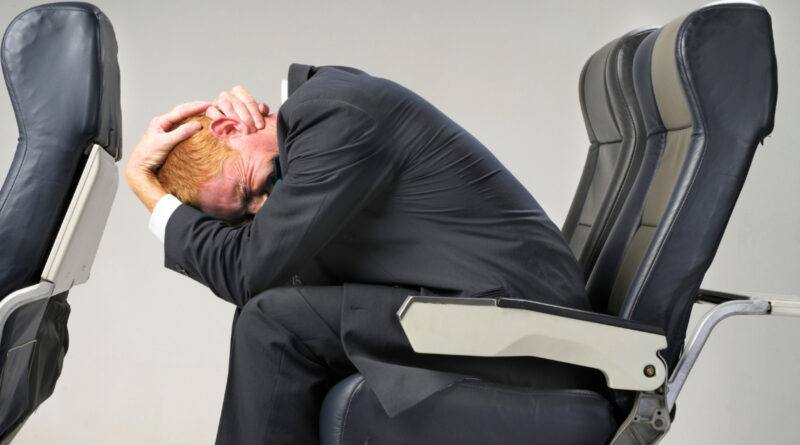Proven Ways To Overcome The Fear Of Flying
WFY Lifestyle Feature – June 2025 Edition By WFY Bureau Desk
Afraid of Flying? Here Are Some Remarkably Effective Ways to Stay Calm
Flying is one of the most exciting experiences of modern life, opening the skies to exploration, family reunions, business ventures, and wanderlust. Yet, for millions around the world—including many members of the Indian diaspora—it can also be a source of anxiety, dread, or even panic. As global air travel surges to pre-pandemic highs, flight anxiety is quietly becoming one of the most commonly reported travel-related phobias.
In 2023, over 25 million Americans admitted to experiencing aerophobia—the fear of flying. Meanwhile, the global number of airline passengers is expected to exceed 5 billion in 2025, according to the International Air Transport Association (IATA). This includes a significant population of diaspora travellers who fly long-haul routes between continents. For this increasingly mobile community, mastering the fear of flying isn’t just desirable—it’s essential.
This comprehensive guide explores seven scientifically-supported and practically-tested techniques that help manage flight anxiety. Each method taps into the body’s natural calming mechanisms or reframes the psychological roots of fear. Whether you’re a nervous flyer or accompanying someone who is, these strategies will help you reclaim comfort in the skies.
1. Cool Your Body to Calm the Mind
The phrase “chill out” has scientific backing. When anxiety kicks in, the sympathetic nervous system—responsible for the ‘fight or flight’ response—floods the body with adrenaline and cortisol. This raises body temperature, heart rate, and alertness.
To counter this, apply a cold compress or chilled beverage to your forehead or neck. Even holding a cool can of water or juice against your skin can activate the parasympathetic nervous system—the ‘rest and digest’ counterpart that reduces stress levels. Sipping cold water slowly can have a similar calming effect.
A study published in Frontiers in Neuroscience (2020) showed that cooling the vagus nerve area—especially around the face and neck—can significantly reduce panic symptoms and restore physiological balance.
Travel Tip: Always request an extra ice-cold beverage onboard or carry a small gel pack to press against your wrist or face when needed.
2. Harness the Power of Your Breath
One of the most immediate tools available to any anxious flyer is their own breath. Breathing exercises are not just about relaxation—they are about regulation. When done correctly, deep, slow breathing helps deactivate the sympathetic nervous system and calms the mind.
Use the 4-7-8 technique:
- Inhale through the nose for 4 seconds
- Hold the breath for 7 seconds
- Exhale slowly through the mouth for 8 seconds
Repeat this cycle at least four times. This method lowers blood pressure, heart rate, and muscle tension. It also brings attention to the present moment—a vital step in managing anticipatory anxiety.
Clinical Insight: Anxiety is always future-oriented. Breathwork is a way to anchor the body and mind to the ‘now’, where no danger is occurring.
3. Engage Your Senses Using the 5-4-3-2-1 Method
This widely-used grounding technique works by engaging all five senses to disrupt spiralling thoughts.
- 5 things you can see: Count and name objects around you
- 4 things you can touch: Feel the texture of your seat, clothing, or armrest
- 3 things you can hear: Identify specific sounds (e.g., engine hum, pages turning)
- 2 things you can smell: Use hand cream, wet wipes, or airline snacks
- 1 thing you can taste: Pop a mint, sour candy, or sip juice
Sensory distraction shifts your brain’s attention from internal fear signals to external, neutral stimuli. This cognitive redirection is a pillar of cognitive behavioural therapy (CBT) and is shown to lower cortisol levels in high-stress environments.
Fun Tip: Carry a sensory kit in your hand luggage—think textured stress balls, minty lip balm, or strongly-scented hand lotion.
4. Use Textures, Flavours, and Sounds to Self-Soothe
Senses are powerful because they directly impact the brain’s chemical processes. For instance, sour candies can trigger salivation, which stimulates the parasympathetic system. Pleasant music or white noise can lower the brain’s alert threshold. Similarly, scented lotions (lavender, chamomile, or peppermint) offer olfactory cues for relaxation.
This approach is rooted in neurosensory integration, a concept widely used in therapeutic settings for stress, trauma, and neurodivergent conditions.
Recommended Items for your travel kit:
- Sour gummies or lemon-flavoured candies
- Textured stress ball or silicone popper
- Downloaded audio playlist with ambient music, ocean sounds, or binaural beats
- Miniature aromatherapy rollers
5. The Calming Power of Touch
Touch is one of the most primal regulators of nervous system activity. Gentle touch releases oxytocin, a hormone that promotes trust, bonding, and calmness.
If you’re travelling with someone you trust, ask for a light touch or massage on the shoulder or scalp. Even a rhythmic hand-hold can ease tension. Alternatively, a weighted travel blanket or lap pad can simulate the calming effect of touch.
Numerous studies on deep-pressure therapy have confirmed its efficacy in reducing anxiety and improving sleep quality—both useful for long-haul flights.
Note: Always carry your own travel blanket or weighted lap pad if you know touch calms you. Even crossing your arms or wrapping up tightly in a scarf can create self-soothing pressure.
6. Create a Grounded, Positive Mantra
Repetitive thoughts often feed anxiety—especially catastrophic ones like “What if the engine fails?” or “What if I panic in midair?” A personalised mantra acts as a verbal shield to challenge these thoughts.
Examples of supportive mantras:
- “Right now, I am safe and in control.”
- “I’ve prepared, I’m ready, and I will land.”
- “Millions of people are flying right now—so can I.”
Say it softly to yourself during take-off or turbulence. The brain responds to repeated words by building cognitive associations. Over time, these mantras become automatic responses to fear cues.
This method mirrors techniques used in Dialectical Behavioural Therapy (DBT) and Acceptance and Commitment Therapy (ACT), which promote resilience through mindful repetition.
7. Tackle Deep-Rooted Fears on the Ground
While in-flight techniques are crucial, the core of flight anxiety often stems from unresolved control issues, past trauma, or fear of helplessness. Addressing these with a qualified mental health professional is not a sign of weakness but wisdom.
Therapies such as Exposure Therapy, CBT, and Eye Movement Desensitisation and Reprocessing (EMDR) have shown excellent success in reducing flying-related phobias.
Some airlines and institutions now offer Fear of Flying Workshops, where participants learn about aviation safety, interact with pilots, tour aircraft, and take supported short flights.
Interesting Fact: The chance of dying in a plane crash is estimated to be 1 in 11 million, making commercial aviation one of the safest transport methods.
The Science Behind the Fear
To understand anxiety, one must understand the triad of the brain’s stress response:
- The amygdala scans for threats and sounds the alarm.
- The hypothalamus coordinates the body’s panic response (fight or flight).
- The prefrontal cortex, responsible for rational thought, is temporarily shut out.
Thus, when midair stress strikes, logic fades and the body reacts as if in danger—even if none exists. That’s why regulation before and during the flight is crucial: calming the body helps reactivate the rational mind.
A Cultural Note for the Indian Diaspora
For many Indian diaspora families, long-haul flying is not a luxury—it is a necessity. Whether flying back home for festivals, emergencies, or to attend weddings, the pressure to board flights regularly is high. Unfortunately, anxiety around flying is rarely discussed openly within South Asian communities, often being dismissed as ‘just stress’ or seen as a weakness.
It is important to destigmatise flight anxiety, especially among youth and elders who may not vocalise their discomfort. Including family in support strategies—like sitting beside them, explaining turbulence, and helping with distractions—can make a huge difference.
You’re Not Alone in the Sky
Air travel is an astonishing feat of human achievement. But it also taps into deep vulnerabilities: fear of loss of control, the unknown, and perceived danger. Fortunately, we now have the tools—both scientific and psychological—to face these fears head-on.
From ice-cold soda cans to affirming mantras, from breathing exercises to therapy, there are many routes to calm, comfort, and courage. The next time you step onto a plane, remember: your mind is your co-pilot, and peace is just one breath away.
Disclaimer: The contents of this article are for general informational purposes only. This is not intended as medical advice. Individuals experiencing chronic or severe anxiety should consult a licensed mental health professional or physician. The WFY Bureau does not endorse any commercial product or therapy mentioned herein. All strategies mentioned are based on current psychological research and practical application techniques.
Published under the WFY Bureau Desk – Lifestyle Section, June 2025 Edition




